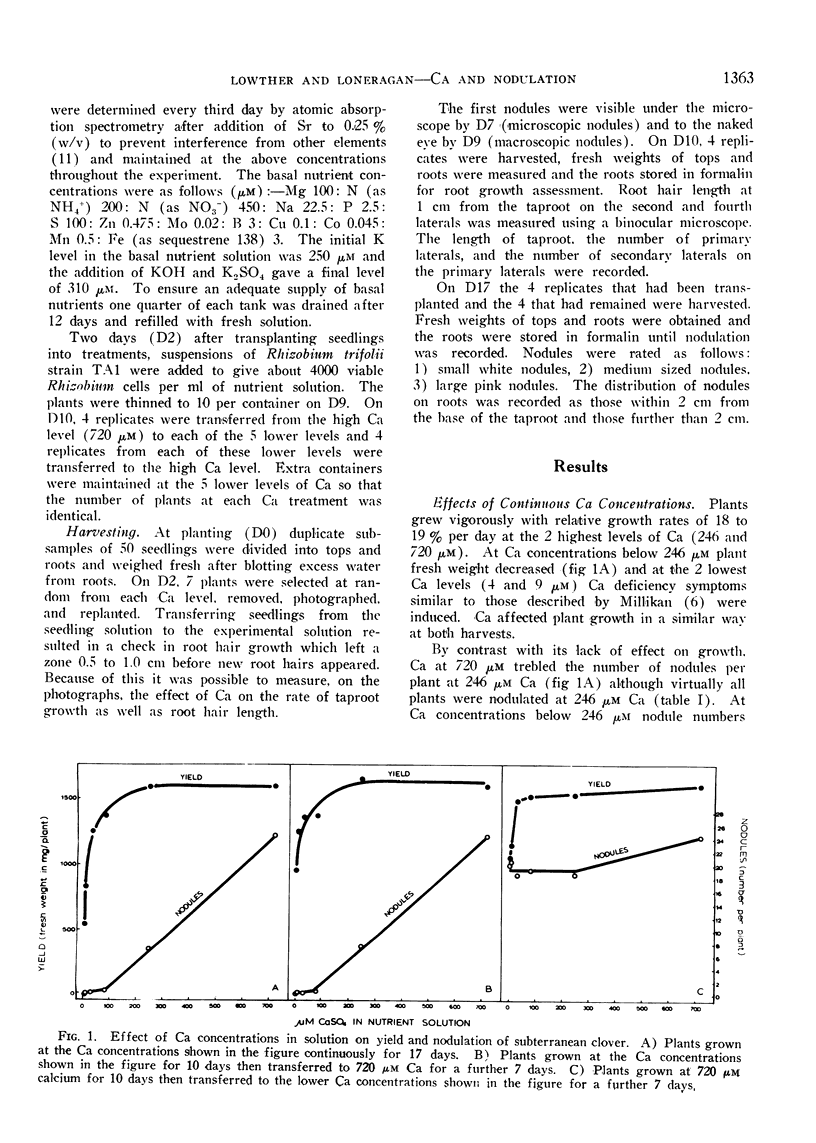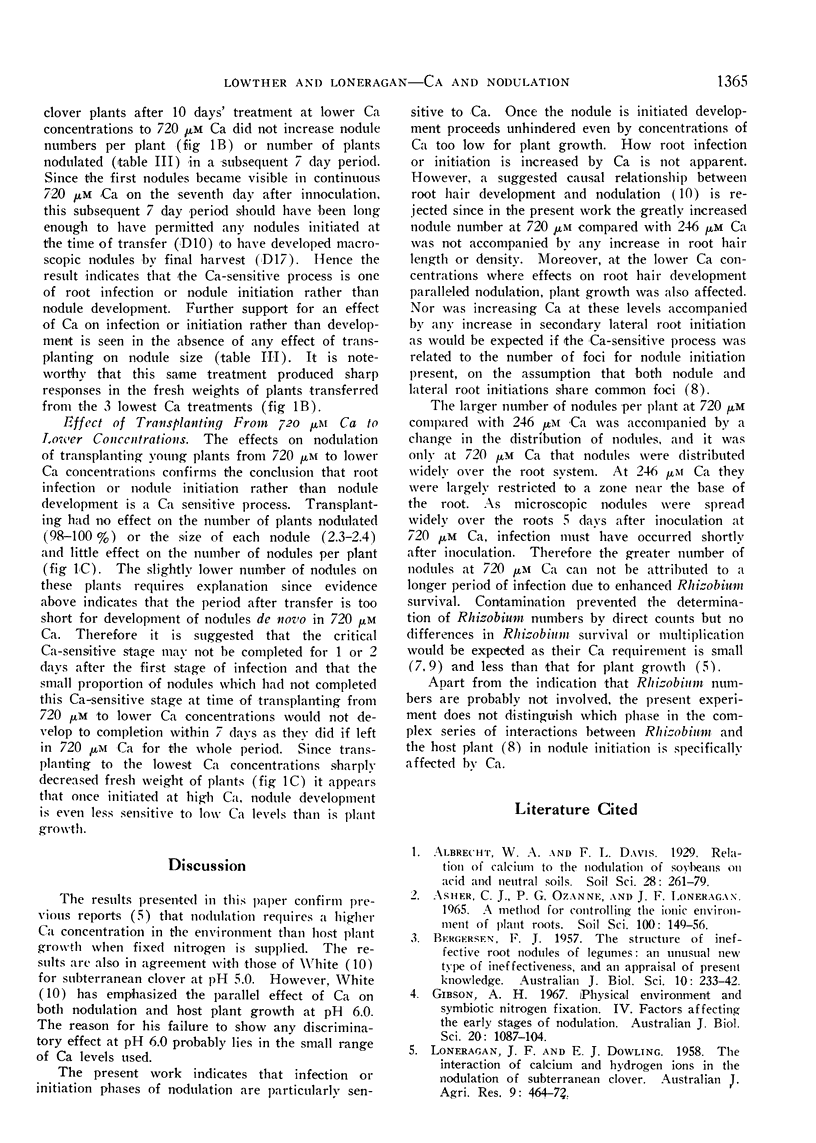Abstract
From a study of the effects of Ca ions on the nodulation of subterranean clover in flowing culture solutions it is concluded that root infection or nodule initiation has a higher Ca requirement than either nodule development or host plant growth in the presence of fixed nitrogen.
Increasing Ca concentration from 246 to 720 μm had no effect on growth of the host plant but increased the number of nodules from 7 to 24 per plant. Decreasing Ca concentration from 246 to 4 μm progressively decreased both plant growth and nodule numbers.
It is suggested that nodule infection or initiation required higher solution concentration of Ca than nodule development since transferring plants after 10 days in lower Ca treatments to 720 μm Ca for 7 days did not increase nodule numbers above those on plants treated continuously at low Ca. Similarly transferring plants from 720 μm Ca to lower Ca treatments did not decrease nodule numbers much below those on plants grown continuously at 720 μm Ca even though growth was depressed. Once initiated, nodule development proceeded at concentrations of Ca too low for plant growth.
The high Ca requirement for root infection or nodule initiation was not thought to be due to effects on survival or growth of Rhizobium and could not be related to effects of Ca on a number of relevant processes:—tap root length, root hair development, or lateral root initiation.
Full text
PDF






